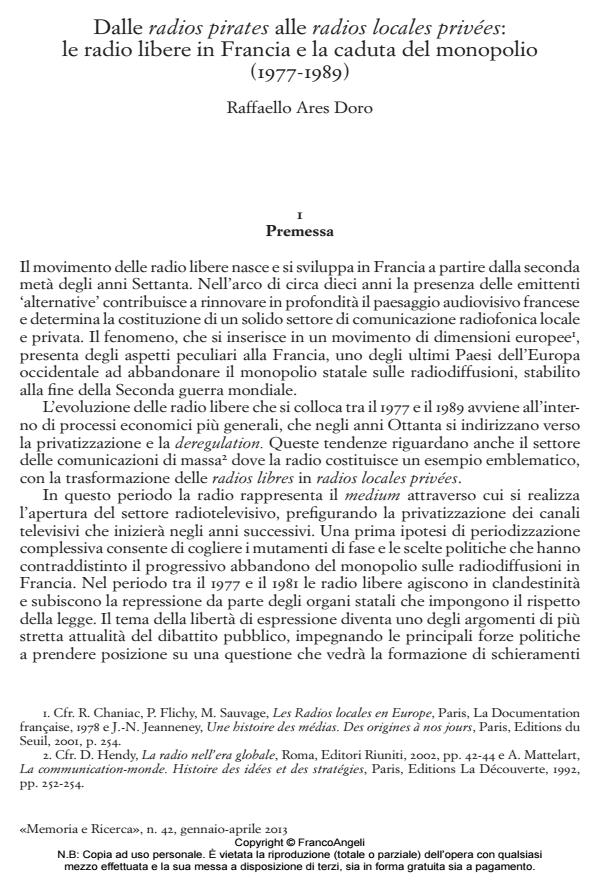From radios pirates to radios locales privees: the free radios in France and the fall of monopoly (1977-1989)
Journal title MEMORIA E RICERCA
Author/s Raffaello Ares Doro
Publishing Year 2013 Issue 2013/42
Language Italian Pages 23 P. 147-169 File size 179 KB
DOI 10.3280/MER2013-042010
DOI is like a bar code for intellectual property: to have more infomation
click here
Below, you can see the article first page
If you want to buy this article in PDF format, you can do it, following the instructions to buy download credits

FrancoAngeli is member of Publishers International Linking Association, Inc (PILA), a not-for-profit association which run the CrossRef service enabling links to and from online scholarly content.
The evolution of free radios in France between 1977 and 1989 contributed to redefine the French audiovisual landscape determining the end of the public monopoly of the broadcasting service. Free radios represented one of the last evolutions of May ’68, expressing the point of view of minority political groups and of local communities. After a period of illegality between 1977 and 1981, free radios were allowed with the election of Francois Mitterrand in May 1981. Despite various attempts by the socialist government to maintain these new media inside the associative sector, forbidding fundings from commercials and the concentration among radios, the broadcasting stations started to be influenced by market logics. However, the intervention of political groups aimed at regulating the radiophonic sector - unlike it was happening in Italy during those same years - guaranteed the existence of associative and community radios through public grants, proving the social importance of alternative mass media, local for contents and radiophonic organization.
Keywords: Free radios, broadcasting, deregulation, monopoly, French politics, legal order
Raffaello Ares Doro, Dalle radios pirates alle radios locales privées: le radio libere in Francia e la caduta del monopolio (1977-1989) in "MEMORIA E RICERCA " 42/2013, pp 147-169, DOI: 10.3280/MER2013-042010